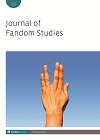
Full text loading...
 , Casey Stannard2
, Casey Stannard2 , Jenna Tedrick Kuttruff2
, Jenna Tedrick Kuttruff2
The purpose of this research was to explore the dress practices of females who wear fan fashion connected to multiple sci-fi/fantasy fandoms in a variety of everyday social contexts. Data from semi-structured, online interviews were analysed in relation to identity theory and the concept of appearance labour using NVivo qualitative analysis software and the constant comparison method. While the data revealed general motivations for wearing fan fashion, it also showed that participants expressed their fan identity across formal, semi-formal and professional settings through wearing fan fashion. Participants also alleviated appearance labour by carefully choosing specific types of fan fashion appropriate for certain social settings and audiences (i.e. conspicuous vs. inconspicuous). This research provided more insight into the trend of fan fashion and led to the development of a taxonomy in which types of fan fashion are classified in terms of their conspicuousness.

Article metrics loading...

Full text loading...
References


Data & Media loading...

Publication Date:
https://doi.org/10.1386/jfs_00045_1 Published content will be available immediately after check-out or when it is released in case of a pre-order. Please make sure to be logged in to see all available purchase options.